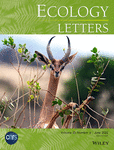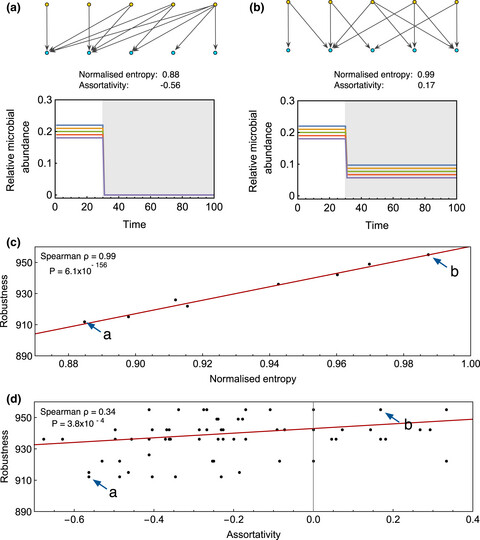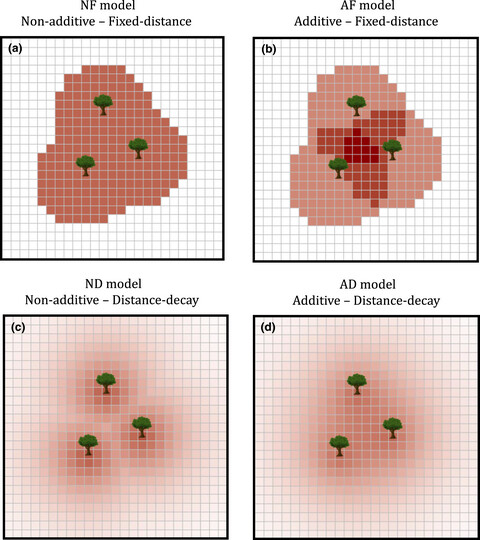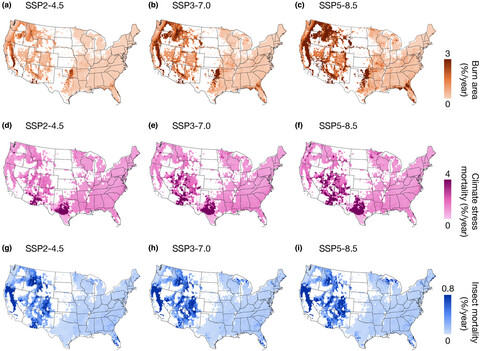Journal list menu
Export Citations
Download PDFs
Issue Information
VIEWPOINT
PERFICT: A Re-imagined foundation for predictive ecology
- Pages: 1345-1351
- First Published: 22 March 2022
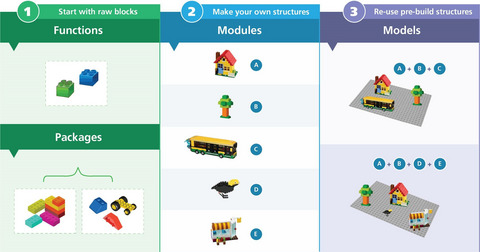
To date, our ability to use predictions for developing, validating, updating, integrating and applying models across scientific disciplines while influencing management decisions, policies, and the public has been hampered by disparate perspectives on prediction and inadequately integrated approaches. We present an updated foundation for Predictive Ecology based on seven principles applied to ecological modelling: make frequent Predictions, Evaluate models, make model workflows Reusable, Freely accessible and Interoperable, built within Continuous workflows that are routinely Tested (PERFICT). We outline some benefits of working with these principles: accelerating science; linking with data science; and improving science-policy integration.
LETTERS
Contribution of genome-scale metabolic modelling to niche theory
- Pages: 1352-1364
- First Published: 05 April 2022
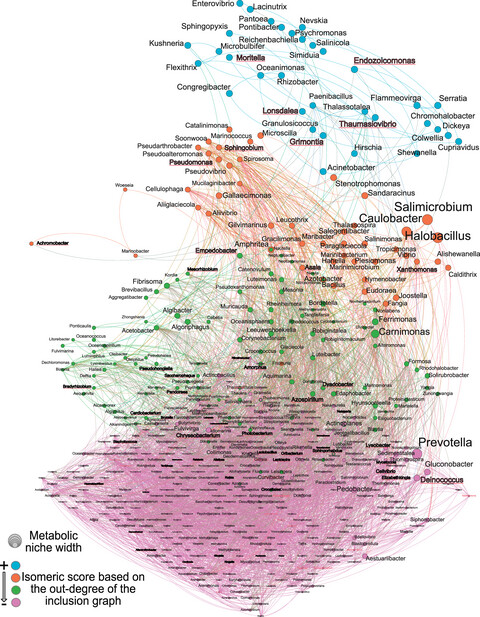
Using metabolic modeling, we propose a metabolic formulation of the fundamental niche. Abstracting the phenotype of the organism with its Genome Scale Model, we compute its metabolic niche and extract well known metabolic traits. From the metabolic niche, one is able to compare organisms niche-wise and also investigate metabolic pathways essentiality in the niche formulation.
Nest architecture is linked with ecological success in songbirds
- Pages: 1365-1375
- First Published: 27 March 2022

Nests are fundamental structures in the lives of birds, but we know little about their evolution. We collated information on nest architecture for more than 3000 species, and found that building nests without a roof (open nests) is associated with having larger geographic ranges and living in cities. These nests also take less days to construct compared to domed nests. We suggest that building open instead of domed nests could have played an important role in the ecological success of modern birds.
The origins of global biodiversity on land, sea and freshwater
- Pages: 1376-1386
- First Published: 25 March 2022
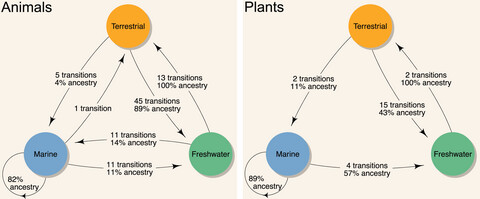
There are dramatic differences in species richness among land, sea and freshwater. We address the causes of these patterns in plants and animals, and show that these patterns are related to differences in diversification rates among habitats. We also reveal the origins of present-day richness in each habitat, and show that most marine species are derived from marine ancestors, most terrestrial species are descended from freshwater ancestors, and yet much freshwater diversity originated from terrestrial ancestors.
Climate warming can reduce biocontrol efficacy and promote plant invasion due to both genetic and transient metabolomic changes
- Pages: 1387-1400
- First Published: 05 April 2022
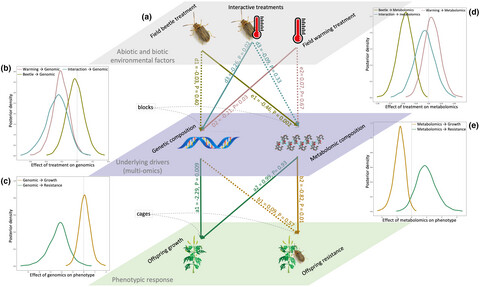
Will climate change increase or decrease biocontrol efficacy against a plant invader? We combined experimental evolution of field Ambrosia populations with tracking both their genomic and metabolomic changes across generations, and with common garden phenotyping experiments of the offspring generations. While selection by climate warming led to consistent changes in the genetic composition of the Ambrosia populations, beetle herbivory changed plant metabolomic profiles without corresponding genetic changes, with global warming to decrease the efficacy of biocontrol and increase the invasion potential of the plant invader.
Individual contributions to group chorus dynamics influence access to mating opportunities in wood frogs
- Pages: 1401-1409
- First Published: 19 March 2022
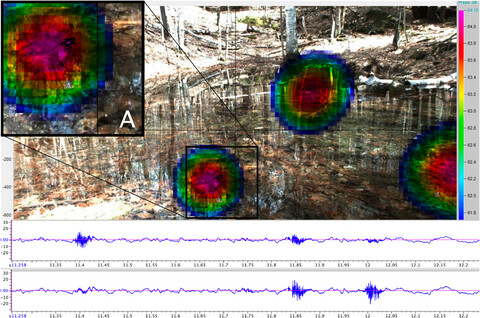
It is often challenging to measure individual variation in an acoustic signal that is produced by large choruses or groups. We use a novel acoustic camera technology to simplify the solution to this challenge. We show that individual contributions to these choruses likely influences variation in mating success.
Cooperation increases robustness to ecological disturbance in microbial cross-feeding networks
- Pages: 1410-1420
- First Published: 05 April 2022
Functional connections between bird eggshell stiffness and nest characteristics through risk of egg collision in nests
- Pages: 1421-1431
- First Published: 15 March 2022
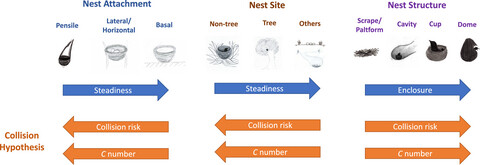
This study establishes the form-function connection between bird nests and eggs by examining the associations between eggshell stiffness and three nest characters for 1350 species. We provide empirical evidence that birds using unsteady or enclosed nests tend to produce eggs with high stiffness, revealing a long-overlooked egg–nest interaction generated through the collision risk of eggs inside nests. The egg–nest interaction may also be associated with the evolution of birds and explain why birds can breed in diverse habitats.
Lianas decelerate tropical forest thinning during succession
- Pages: 1432-1441
- First Published: 12 April 2022
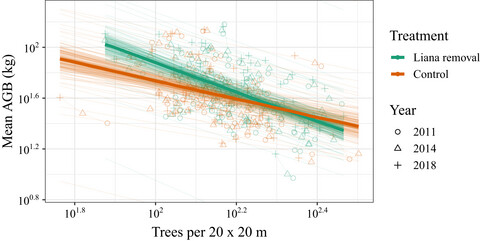
We discovered that lianas dramatically altered the process of forest thinning, commonly attributed to tree-tree competition, by reducing tree growth. Without lianas, trees grew and presumably competed more, ultimately reducing tree density while increasing mean tree biomass. Our study demonstrates that non-tree competitors, such as lianas, can have a substantial effect on thinning trajectories in tropical forests.
Leaf trait network architecture shifts with species-richness and climate across forests at continental scale
- Pages: 1442-1457
- First Published: 09 April 2022
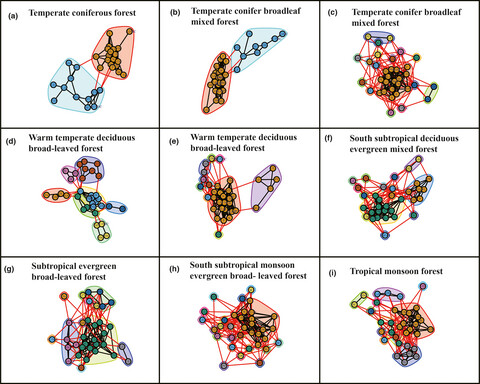
We constructed leaf trait networks (LTNs) from 35 structural, anatomical and compositional leaf traits for 394 tree species in nine forests from tropical to cold-temperate zones in China. Our analyses supported the hypothesis that LTNs would increase in modular complexity across forests in parallel with species-richness and climatic warmth and moisture, due to reduced phenotypic constraints and greater opportunities for niche differentiation. Additionally, we found that within LTNs, leaf economics traits including leaf thickness would have central importance, acting as hub traits with high connectivity due to their contributions to multiple functions.
The functional form of specialised predation affects whether Janzen–Connell effects can prevent competitive exclusion
- Pages: 1458-1470
- First Published: 26 April 2022
Globally, tree fecundity exceeds productivity gradients
- Pages: 1471-1482
- First Published: 23 April 2022
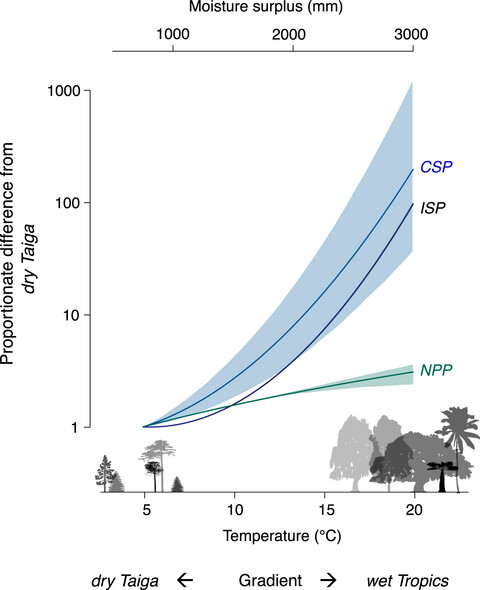
A global synthesis of raw seedproduction data shows a 250-fold increase in seed abundance from cold-dry to warm-wet climates, driven by a 100-fold increase in seed production for a given tree size. The increase in seeds per tree can arise from adaptive evolution driven by intense species interactions or from the direct effects of a warm, moist climate on tree fecundity.
Interactive effects of multiple stressors vary with consumer interactions, stressor dynamics and magnitude
- Pages: 1483-1496
- First Published: 27 April 2022
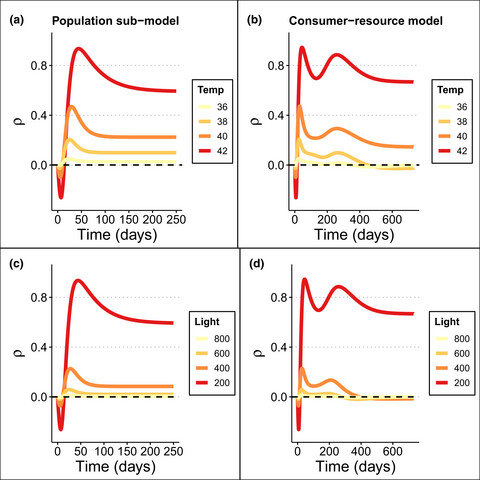
Here, we use process-based models to study how interactions generalise across three levels of biological organisation (physiological, population and consumer-resource) for a two-stressor experiment on a seagrass model system. We found that the same underlying processes could result in synergistic, additive or antagonistic inter-actions, with interaction type depending on initial conditions, experiment duration, stressor dynamics and consumer presence
Emergence patterns of locally novel plant communities driven by past climate change and modern anthropogenic impacts
- Pages: 1497-1509
- First Published: 11 May 2022

Eight thousand years of post-glacial warming coincided with a threefold increase in how often locally new, ecologically novel, communities emerged, relative to glacial estimates, predominantly at high latitudes and with multi-millennial time lags. In contrast, emergence of locally novel communities in the last 200 years, although already on par with glacial retreat estimates, occurred at midlatitudes and near high human population densities. Anthropogenic warming does not appear to be strongly associated with modern local novel communities, but may drive widespread emergence in the future, with legacy effects for millennia after warming abates.
Future climate risks from stress, insects and fire across US forests
- Pages: 1510-1520
- First Published: 11 May 2022
METHOD
A novel analytical framework to quantify co-gradient and countergradient variation
- Pages: 1521-1533
- First Published: 11 May 2022
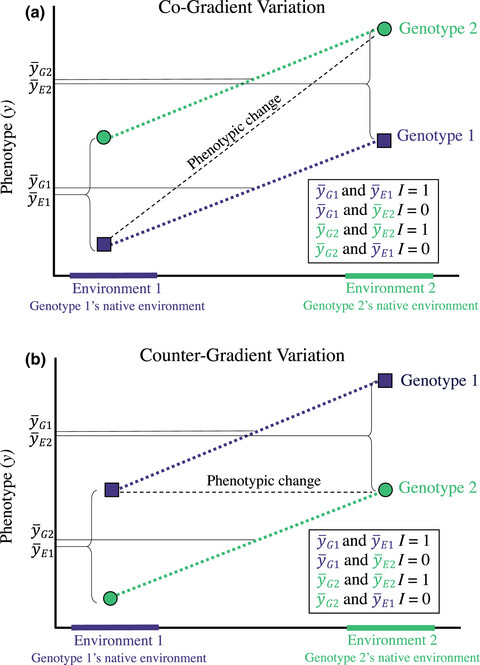
Spatial covariance between genotypic and environmental influences on phenotypes (CovGE) can result in the nonrandom distribution of genotypes across environmental gradients and is a potentially important factor driving local adaptation. However, a framework to quantify the magnitude and significance of CovGE has been lacking. We develop a novel quantitative/analytical approach to estimate and test the significance of CovGE from reciprocal transplant or common garden experiments.
SYNTHESES
Assessing the risk of human-to-wildlife pathogen transmission for conservation and public health
- Pages: 1534-1549
- First Published: 22 March 2022
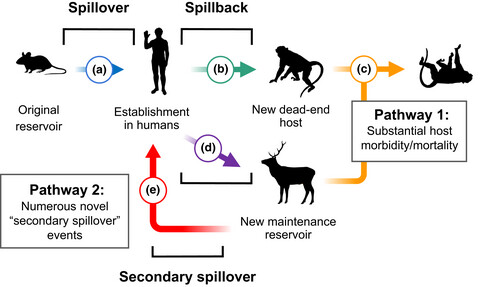
Human-to-wildlife pathogen transmission has played an important role in the epidemiology of a number of pathogens in the past, and is likely continuing to play an important role in the Anthropocene. Despite much concern surrounding the transmission of human pathogens into animal populations, particularly during the SARS-CoV-2 pandemic, there has been little critical assessment of the evidence base and the threat of these pathogens for conservation and public health. Here, we compile an evidence base of 97 published human-to-wildlife pathogen transmission events, and we discuss the sampling biases that have likely played an important role in producing the observed patterns, discussing how to collect further data to aid in risk assessment in the near future.
Sexual dimorphism in phenotypic plasticity and persistence under environmental change: An extension of theory and meta-analysis of current data
- Pages: 1550-1565
- First Published: 25 March 2022

We extend theoretical models of population persistence in changing environments and show that female-biased adaptive plasticity typically promotes population persistence. We then performed a meta-analysis to systematically test for sex differences in plasticity under manipulated thermal conditions. Despite individual examples of sexually dimorphic plasticity, systematic differences were rare (the only exception being female-biased plasticity for cold resistance).
Life history mediates the trade-offs among different components of demographic resilience
- Pages: 1566-1579
- First Published: 25 March 2022
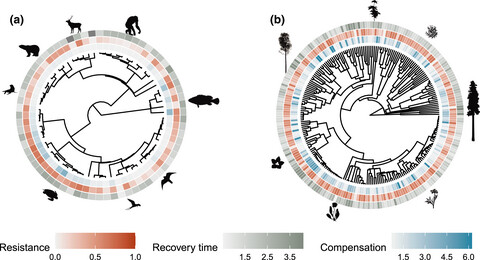
Understanding how the resilience of species arises has become a key question in ecology and conservation. Here, we find that the demographic resilience of species is determined by three interrelated components: resistance, compensation and time of recovery. Moreover, these components of resilience are highly determined by key life history traits, such as generation time and mean reproductive output.
Net plant interactions are highly variable and weakly dependent on climate at the global scale
- Pages: 1580-1593
- First Published: 23 April 2022
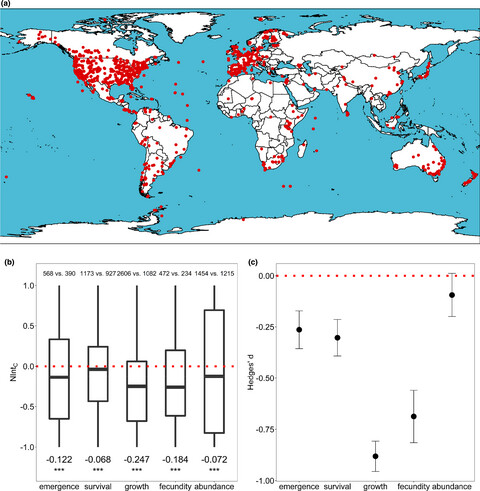
In this work, we quantify global patterns of plant–plant interactions by synthesising a global data set comprising 10,502 pairs of empirical comparisons of plant performances with versus without neighbours across all seven (sub-)continents and over a century of research. Based on our global database, we are able to show for the first time that competition occurs more frequently in the net outcome of plant–plant interactions in plant communities worldwide. Our results confirm the traditional wisdom that competition is a key mechanism structuring natural communities and are crucial to understand the key role of plant–plant interactions in determining community compositions at the global scale.




